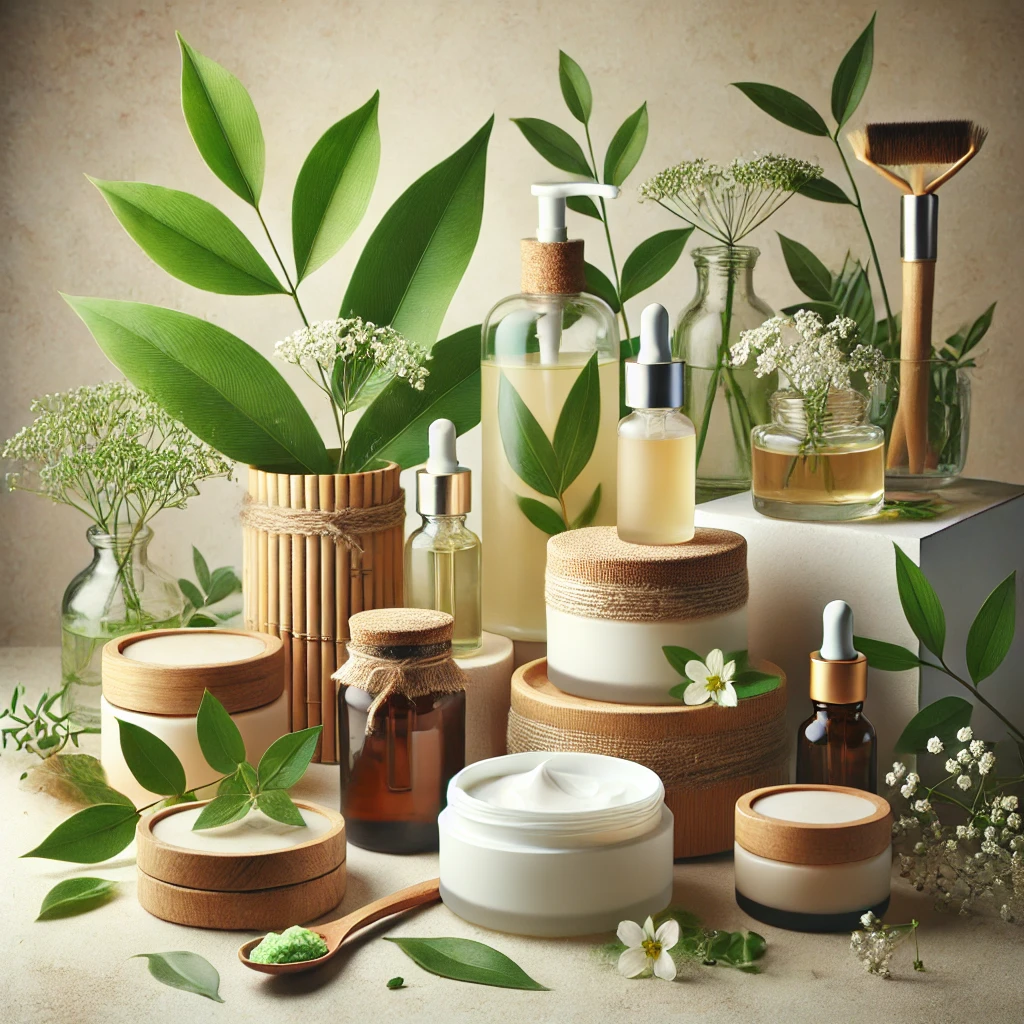
How to Nurture Your Skin and the Planet, One Ritual at a Time
Introduction: The Beauty Industry’s Green Revolution
Picture this: Every time you cleanse, moisturize, or apply serum, you’re not just caring for your skin—you’re healing the Earth. The $500 billion beauty industry, long criticized for excess waste and environmental harm, is finally turning a new leaf. Sustainable skincare is no longer a niche trend but a global movement, driven by eco-conscious consumers demanding transparency and responsibility.
From plastic-clogged oceans to deforestation for palm oil, traditional beauty practices have left deep scars. But innovative brands are rewriting the narrative, blending science and ethics to create products that deliver radiant skin without compromising the planet’s future. This article dives into the world of eco-friendly skincare, revealing how small choices can lead to transformative impacts—for you and the environment.
The Essence of Sustainable Skincare: Beyond “Natural” Labels
Sustainable skincare isn’t just about slapping “organic” or “natural” on a label. It’s a holistic approach that considers every stage of a product’s lifecycle.
Waterless Formulations: Conservation in Every Drop
Traditional skincare products are 60–80% water, requiring vast resources for production and shipping. Waterless innovations—like solid cleansers, powdered masks, and concentrated serums—eliminate this waste. Brands like Ethique and Lush lead the charge with shampoo bars and moisturizer tablets that reduce water use by up to 98%. Bonus: These compact formulas last longer and slash shipping emissions.Upcycled Botanicals: Beauty from Waste
Imagine coffee grounds revitalizing your skin or discarded grape seeds becoming antioxidant-rich oils. Upcycling transforms food and agricultural waste into potent skincare ingredients. For instance, EcoClean Face uses repurposed coffee grounds in its exfoliating bars, proving sustainability and efficacy can coexist. Meanwhile, ancient practices highlighted in Timeless Beauty: Ancient Skincare Secrets show how civilizations like the Egyptians used olive pits and rice bran—early examples of upcycling long before it became a trend.Carbon-Neutral Production: Balancing the Scales
Brands like REN Clean Skincare and Biossance offset their carbon footprints through reforestation, renewable energy, and regenerative farming. Carbon-neutral certification ensures every emission from sourcing to shipping is counterbalanced, making your moisturizer part of the climate solution.Biodegradable Packaging: Returning to Earth
Conventional plastic packaging takes 450+ years to decompose. Sustainable alternatives like sugarcane-based tubes, mushroom mycelium jars, and seaweed-derived capsules break down in months. Seed Phytonutrients uses compostable paper bottles, while Kjaer Weis offers luxe refillable compacts.
The Hidden Cost of Conventional Beauty: Pollution, Exploitation, and Waste
Beneath the glossy packaging of mainstream skincare lies a darker reality:
Microplastics: The Invisible Invaders
Over 12 million tons of plastic enter oceans yearly, with microplastics (found in exfoliants and glittery washes) poisoning marine life—and eventually, our food chain. The EU has banned microbeads, but they persist in many products.Over-Packaging: Luxury at Earth’s Expense
Elaborate boxes, non-recyclable pumps, and single-use sachets contribute to 120 billion units of packaging waste annually. Less than 9% is recycled.Unethical Labor Practices: The Human Toll
Mica mining (a shimmering mineral in makeup) employs 22,000 children in India under hazardous conditions. Similarly, palm oil production drives deforestation and displaces indigenous communities.
Key Ingredients for a Greener Glow: Nature’s Powerhouses
Sustainable skincare relies on ingredients that heal both skin and ecosystems:
Blue-Green Algae: The Ocean’s Antioxidant
Harvested from pristine waters, this superfood combats pollution-induced aging. Farmacy’s Honey Halo uses nutrient-rich algae to strengthen skin barriers.Cold-Pressed Oils: Maximizing Potency
Unlike heat-processed oils, cold-pressed versions (e.g., rosehip, jojoba) retain vitamins and antioxidants. Herbivore Botanicals’ Phoenix Oil rejuvenates with organic, fair-trade oils.Fermented Extracts: Nature’s Biohack
Fermentation boosts ingredient efficacy—think kombucha for skin! This technique isn’t new; as explored in Timeless Beauty: Ancient Skincare Secrets, cultures like Korea’s hanbang tradition have fermented ginseng and rice for centuries to create luminous complexions. Modern brands like EcoClean Face now blend these time-tested methods with biodegradable packaging for a truly circular approach.Hyaluronic Acid from Wheat: Sustainable Hydration
Lab-grown hyaluronic acid, like Grown Alchemist’s formula, avoids animal derivatives and offers a vegan, low-impact alternative.
Making the Switch: Small Steps, Big Impact
Transitioning to sustainable skincare doesn’t require a full cabinet overhaul. Start here:
Refill, Reuse, Reimagine
Brands like The Body Shop and Kiehl’s offer refill stations for cleansers and creams. Keep your favorite glass jar and replenish it endlessly.Decode Certifications
Look for Fair Trade, Leaping Bunny (cruelty-free), and EWG Verified labels. Apps like Think Dirty scan products for eco-friendly credentials.DIY Skincare: Kitchen to Counter
Whip up a honey-oat mask or coffee scrub using pantry staples. Less packaging, zero chemicals.
The Future of Beauty: Lab-Grown Botanicals and Beyond
Innovations are reshaping beauty’s horizon:
Lab-Grown Ingredients
Companies like Biossance brew squalane from sugarcane, saving 2 million sharks annually. Cultured stem cells and algae-derived collagen are next.Self-Healing Packaging
Imagine a bottle that repairs scratches using plant-based polymers. Researchers are on it!Zero-Waste Retail
Stores like Package Free Shop and Credo Beauty offer bulk buys and bring-your-container policies.
Conclusion: Your Skin Care Routine Can Save the World
Every sustainable choice—a refillable serum, a palm oil-free moisturizer—sends a message: Beauty shouldn’t cost the Earth. By supporting ethical brands and embracing mindful rituals, you join a global community proving that radiance and responsibility go hand in hand. Start today. Your skin—and the planet—will glow with gratitude.
